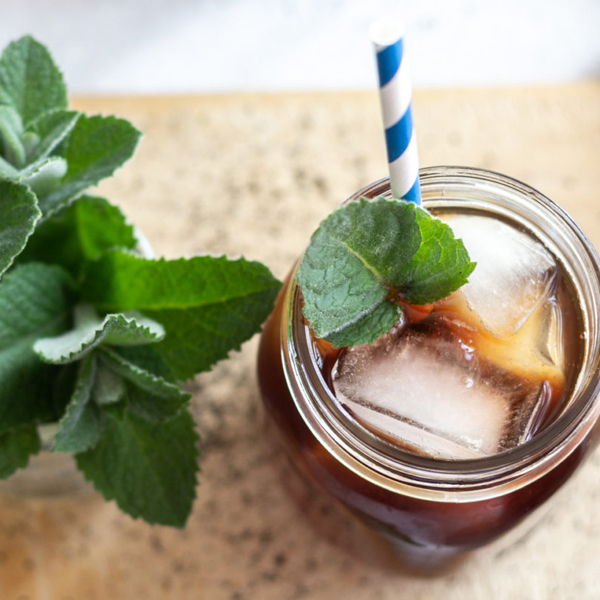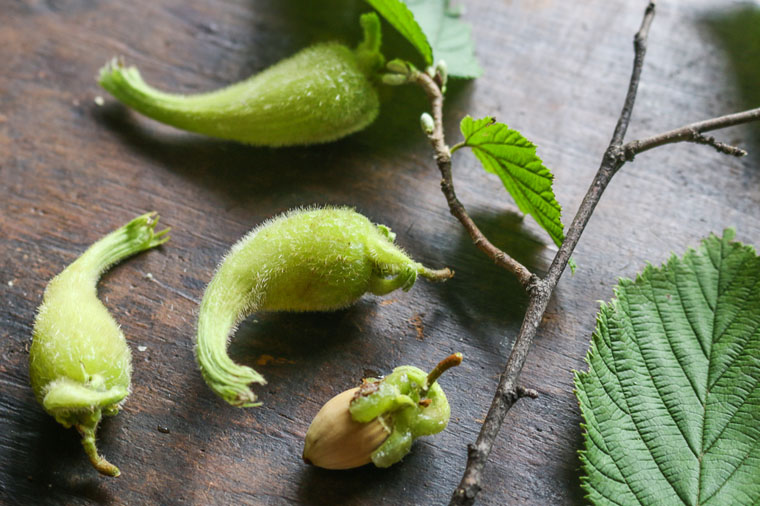How to Grow, Harvest, and Use Mint
What is Mint?
We’re probably all familiar with mint; it’s one of the most common herbs used for its unique flavour and scent. Mint, or Mentha, is a part of the Lamiaceae family of flowering plants. Many of the plants in this family are also aromatic and include widely used herbs like basil, rosemary, sage, savoury, marjoram, oregano, hyssop, thyme, and lavender, as well as other medicinal herbs such as catnip, salvia, bee balm, and oriental motherwort.
Not only is mint part of a huge family of plants commonly used for their culinary and medicinal properties, but it also has many subspecies, each with its own unique fragrance and taste. The two most common subspecies are peppermint and spearmint, but there are many other varieties that range from savoury to sweet in flavour. Some other commonly found subspecies include apple mint, ginger mint, chocolate mint, orange mint, lemon mint, grapefruit mint, strawberry mint, basil mint, licorice mint, as well as several other varieties.
In addition to store-bought cultivated varieties, there is also wild mint, Mentha arvensis (formally known as Mentha canadensis). Wild mint is a unique cultivar, native to our region and can be found growing wild in areas such as grassy swales, meadows, moist ditches, riverbanks, and lakeshores. Wild mint can also be used for culinary and medicinal purposes. It has a multi-dimensional aroma and flavour that is refreshing like conventional mint, but also earthy.
What Makes Mint so Great?
Mints have long been used for their medicinal, aromatic, culinary, and cosmetic properties. Mints are high in vitamins A, C, and K as well as plant proteins, calcium, iron, magnesium, and trace amounts of zinc. Most notably, however, is its unique cooling effect on the senses and the body.
Medicinally : Mint has many therapeutic medicinal uses. Mint aids digestion and eases indigestion, gas, heartburn, and ulcers. It can also help alleviate cold and flu symptoms by reducing mucus and lowering fevers. Drinking mint tea can help stimulate the mind, deflect headaches, and help alleviate motion sickness. It also has some antispasmodic properties which can help reduce muscle cramping and delay menstruation. There is some evidence that it can also stimulate circulation and reduce heart palpitations. Mint has documented medicinal uses as an analgesic, local anesthetic, antiemetic, anti-inflammatory, antimicrobial, anti-rheumatic, antiseptic, antispasmodic, aromatic, bitter, blood purifier, carminative, diaphoretic, digestive, emmenagogue, febrifuge, galactagogue, nervine, pungent, refrigerant, stimulant, and stomachic. It is typically used in compresses, creams, essential oils, hydrosil, oil infusions, poultices, salves, syrups, teas/tisanes, and tinctures.
Culinary : Due to its unique flavour and strong aromatic properties, mint is widely used in a number of dishes to create more unique flavour profiles. It maintains its flavour well when dried and can easily be used fresh or stored long term when dried. Mint is also high in essential oils and can easily used for making extracts. Mint is completely versatile and can be used in both savoury and sweet dishes, so don’t hold back, get experimental!
How to Grow Mints
Mints are extremely resilient and vigorous perennials, making them very easy to grow. They will thrive in a range of sun conditions, anywhere from part shade to full sun. Moist, but well-drained, soils similar to their native environment along water banks provide the ideal environment for most mints, however many are drought tolerant. Most varieties have a rapid spreading growth habit and it is not uncommon for mint to completely take over gardens. These characteristics make them an excellent choice for container gardening. For mint grown in the garden, try burying a large deep planter with good drainage in the garden soil to provide a barrier to help prevent the mint from over spreading.
When to Harvest Mints
Mint leaves can be harvested at anytime before the plant flowers. When a plant is young and still establishing itself, try to pick less than 10% of the leaves at a time. As the plant grows larger up to 30% can be picked at a time. Once the plants begins to bud, it is time to harvest the remainder of the plant before the buds open.
How to Harvest Mints
To harvest the entire plant, use small snips and cut each sprig about 2 inches from the top of the soil (or just above the lowest set of leaves). This will encourage the plant to grow a second harvest if there is still enough time in the growing season.
Use Caution with Mints
While most mints are safe to consume, some varieties are not. Always be sure of your identification before handling or consuming plants, especially when foraging plants in the wild. For those who are pregnant or wishing to become pregnant, avoid consuming large amounts of mint especially in the first trimester.
This blog is meant as an educational and informational resource. While we strive for accuracy, the information provided in this blog is not intended to replace the advice of a medical professional. Please consult your medical practitioner or herbalist before using any plants especially if you take any prescription medications, have a pre-existing condition, allergies, or if you are pregnant or breastfeeding. Kiwi Nurseries Ltd. and the author of this blog do not accept any liability or responsibility for any consequences caused by consuming or using any plants. Any person who ingests or uses any plant, does so at their own risk.
How to Store Your Mints
Before storing, be sure to rinse leaves of any unwanted debris and completely air dry to prevent mold growth.
Dry your Mint : The most common way to store mint is to dry or dehydrate the leaves and store in a cool, dark, dry place.
Make a Tincture : By infusing your mint in alcohol, you can create a tincture that will maintain a long shelf life.
Freeze your Mint : Mint can also be freezed for future use. One way is to make a mint tea and freeze the tea in ice cube trays either with or without the leaves. A simpler method is to pack dry leaves into an airtight container and storing in the freezer for up to a year.

Homemade Mint Extract
Homemade mint extract is as easy as mint + vodka + time. Just in time for the holiday season, homemade mint extract works great for flavouring everything from christmas cookies to hot chocolate.
Our Printable PDF

Iced Mint Tea
Who doesn’t love a peppermint tea? When the days are still warm iced mint tea can offer a cool refreshment any mint lover will enjoy. For an extra fun twist, you can try this recipe with different varieties of mint and find your favourite.
Our Printable PDF

Summer Salad with Mint
Another refreshing choice for those hot days, this light summer salad is as hydrating as it is tasty with its watermelon, strawberries, cucumber, and mint!
Our Printable PDF

Mint & Arugula Pesto Pasta
Pesto is another surprisingly tasty way to use your mint. Paired with arugula and parmigiano reggiano cheese, the mint in this recipe brings an interesting complexity to a simple, yet delicious dish.
Our Printable PDF

Matcha Chocolate Mint Popsicles
Not just for the vegans, this delectable dessert really hits the spot for any mint chocolate chip lover who wants to indulge guilt free.
 |
| 



